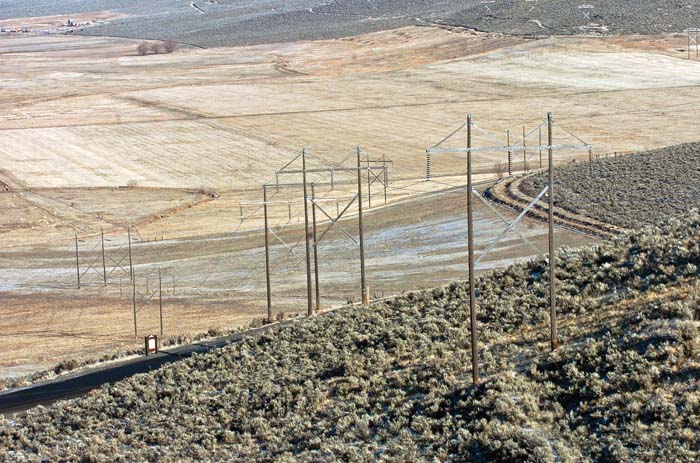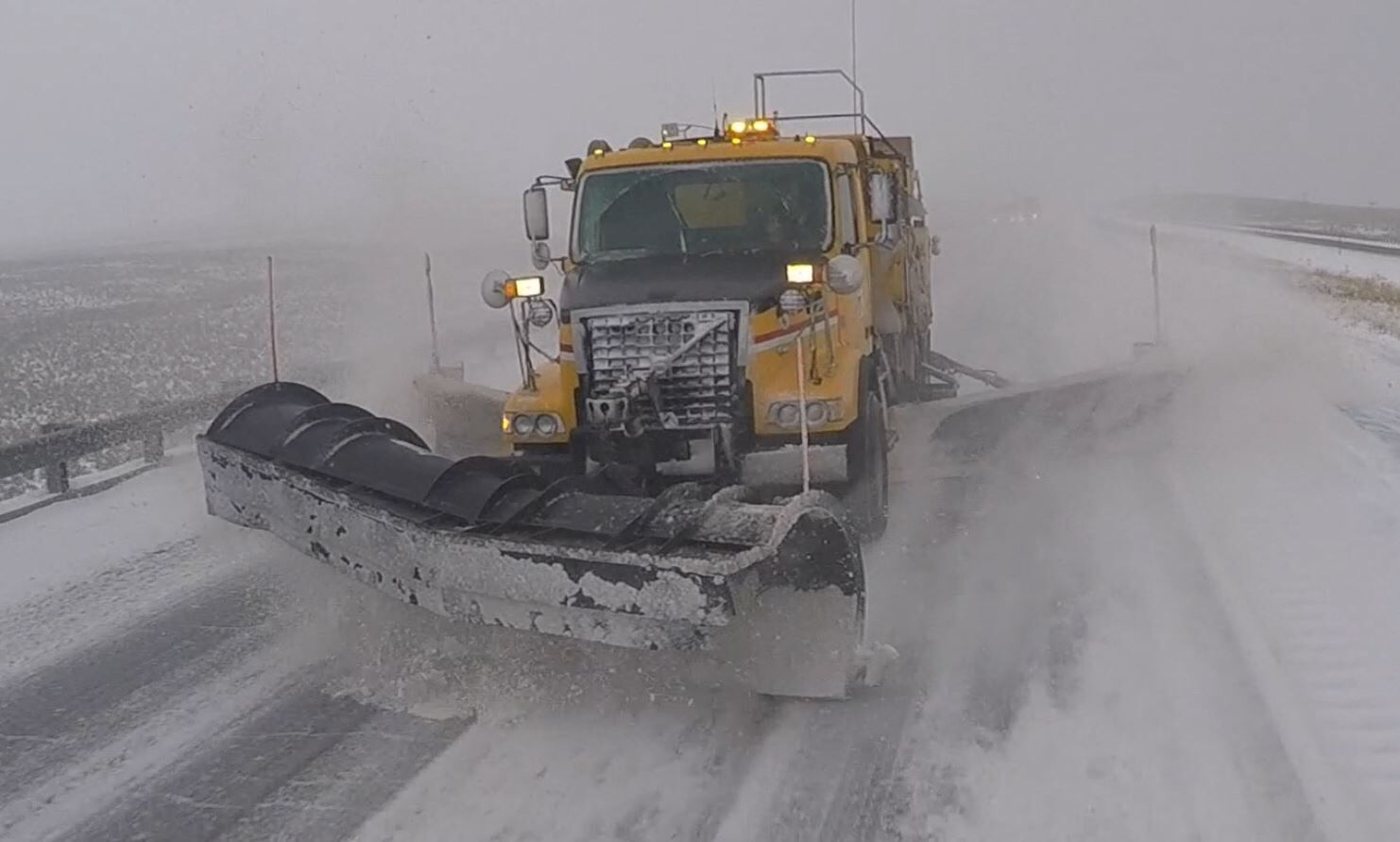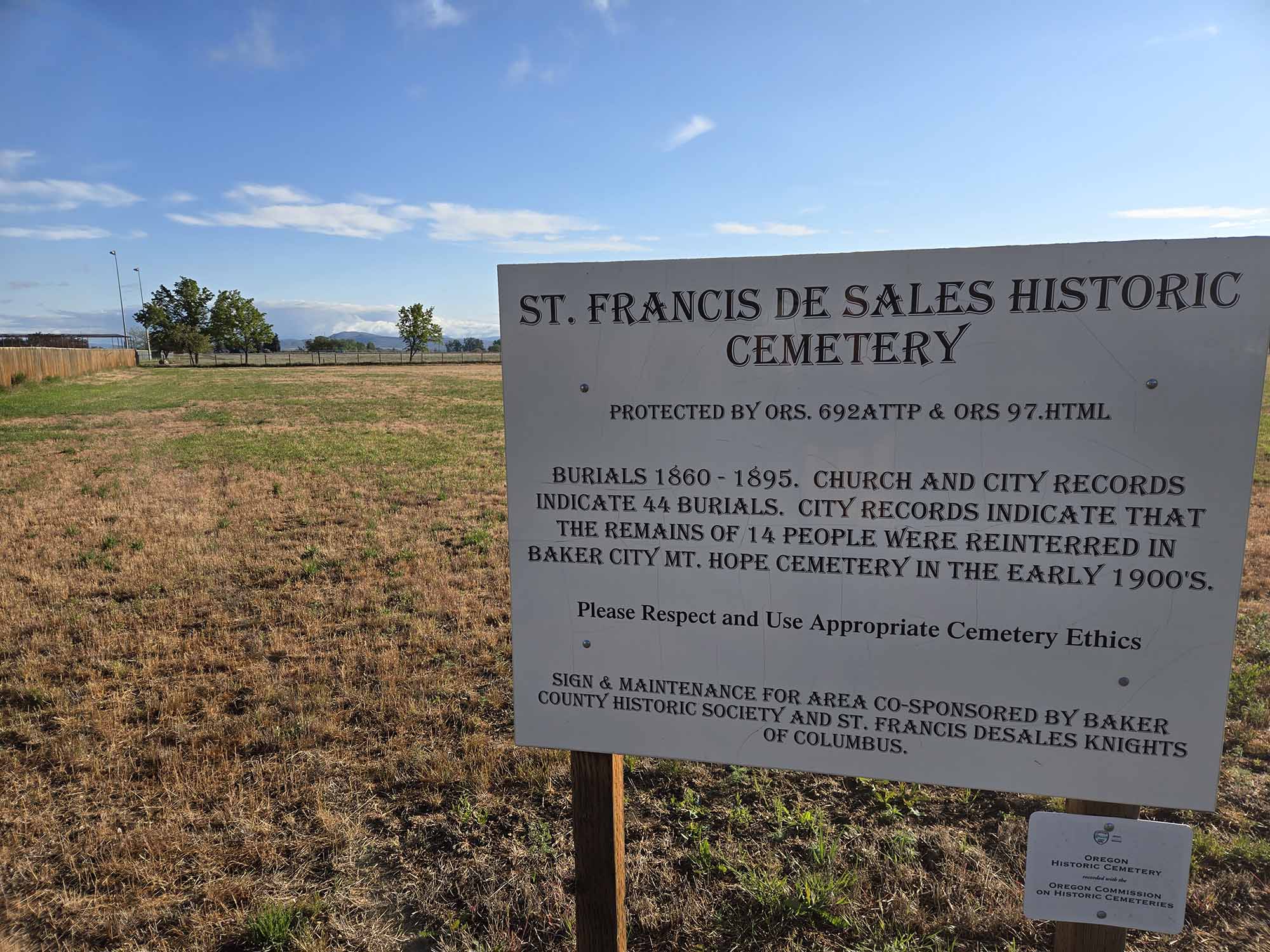Power Problems
Published 2:20 pm Wednesday, July 17, 2019

- S. John Collins / Baker City Herald file photoThe proposed Boardman-to-Hemingway power line would follow the route of an existing line that crosses Highway 86 between Baker City and the Oregon Trail Interpretive Center.
More than thirty people turned out Wednesday in Baker City for a public hearing on the proposed Boardman-to-Hemingway power line, and more than a dozen local residents told a state council that they oppose the line that would pass through Baker County.
Trending
Nobody spoke in favor of the line.
Those who testified before the Oregon Energy Facility Siting Council listed multiple concerns about the proposed 500-kilovolt line, including its potential effects on views from the Oregon Trail Interpretive Center, harm to agricultural land and wildlife such as sage grouse.
Idaho Power first proposed B2H, a 300-mile line, in 2007.
Trending
The Oregon Department of Energy has recommended the Energy Facility Siting Council approve the project, and on May 22 the Department of Energy issued a draft proposed order for B2H. That order started a 60-day comment period, during which the Siting Council will have multiple public hearings in Northeastern Oregon.
Baker County Commissioner Mark Bennett said county officials have followed the B2H project since its inception.
“Baker County’s position from the get go and continues to this day is that we do not support a line going through Baker County,” Bennett said.
The proposed route through the county would be mostly on private land — 83% of the 68.4 miles.
Bennett told the Siting Council that he believes the power line, as proposed, would isolate populations of sage grouse, a candidate for protection under the Endangered Species Act.
Baker County’s sage grouse population has declined by more than 70 percent of the past 15 years, and Bennett said he’s concerned that effects from B2H could result in the species being given federal protection. That could lead to restrictions on livestock grazing, off-road vehicle travel and other uses of public land.
Bennett also discussed the Oregon Trail Interpretive Center, the BLM facility atop Flagstaff Hill about 5 miles east of Baker City.
The Center is one of Baker County’s most popular tourist attractions, and Bennett said the power line would be visible from the Center’s picture window, with its iconic view of Baker Valley and the Elkhorn Mountains.
Bennett said he learned, after Wednesday’s hearing, that Idaho Power has studied the feasibility of burying the power line in the area near the Interpretive Center.
That study, done by private engineer Robert Yender of Idaho, concluded that the cost to bury the B2H line for 1fi miles near the Interpretive Center would cost $102 million to $111 million, compared with an estimated $3.4 million for the same segment if the line is above ground.
Bennett’s fellow county commissioner, Bruce Nichols, told the Siting Council that tourism is “very important to Baker.”
“We have a hard enough time trying to build that up,” he said, and if the state approves a power line that mars the view from the Interpretive Center “you’re making us go backwards again and we get nothing other than grief out of it.”
Other speakers talked about different concerns with B2H.
Karen Yeakley, a former Baker City mayor and former manager of the Baker County Chamber of Commerce, cited the Siting Council’s own standards.
“In your siting standards of protecting against adverse environmental impacts, this project due to construction will have significant adverse impacts,” Yeakley said. “Construction decreases farm land that affects our food source, the wildlife, pollinators, and cattle grazing.”
She also discussed how Oregon Administrative Rules and Siting Council standards have numerous references to mitigation. She said mitigation will “not help dead eagles, dead owls, dead blue heron, dead ducks, dead geese, dead hawks, dead trumpeter swans, and dead sage grouse that we’ve so hard and diligently tried to protect.”
Yeakley also said she’s concerned about how the line could affect Oregon Trail ruts.
Irene Gilbert of La Grande said she’s concerned about B2H leading to increases in invasive weeds that harm farm and rangeland, effects on threatened and endangered species, wildlife habitat and the economic stability of the five Oregon counties through which the line would pass.
Baker County property owners who own land along the proposed route of the power line also testified.
Laurie Solisz, whose property is directly below the Interpretive Center, Wayne Kaaen from Halfway, and Bruce Owen of Durkee each said they oppose Idaho Power’s plan. The company would have to buy easements across private property.
See more in the June 21, 2019, issue of the Baker City Herald.









